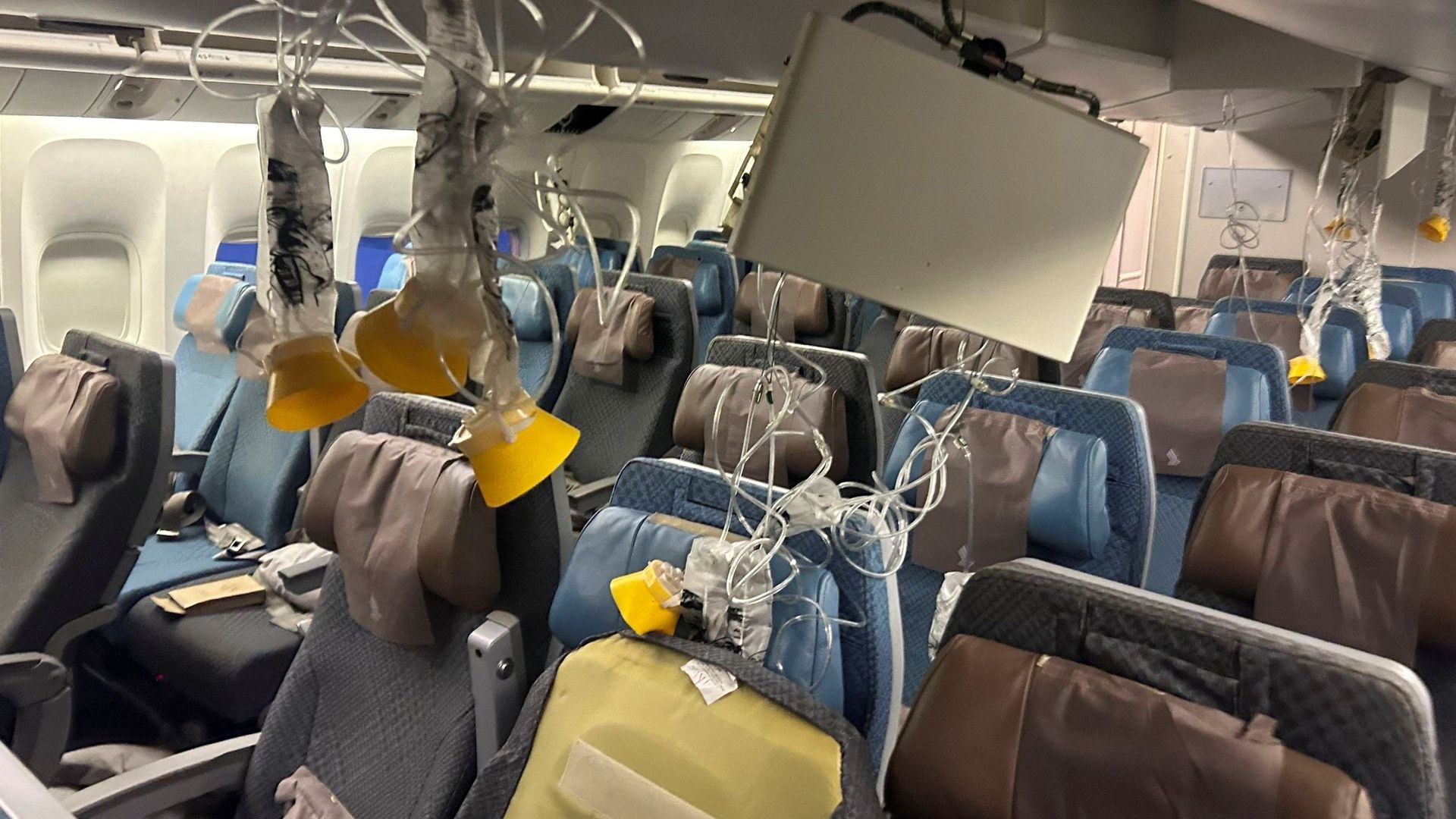Turbulence struck a Singapore Airlines flight from London Heathrow on Tuesday, with one man dead and many others “launched into the ceiling”.
Flight tracking data showed the plane cruising at 37,000ft (11,280m) before dropping 6,000ft (1,830m) in around three minutes over the Indian Ocean.
A spokesperson for FlightRadar24 said this appeared to “just be a flight level change in preparation for landing”.
Authorities believe a 73-year-old British man, who had a heart condition, likely died from cardiac arrest, with at least 30 others injured as a result of the turbulence.
Deaths from turbulence are extremely rare, and the US’ Federal Aviation Administration (FAA) said 146 passengers and crew have been seriously injured by turbulence between 2009 and 2021.
But what could have caused the incident, what types of turbulence exist, and are the events getting worse? Here’s what experts have said so far:
Please use Chrome browser for a more accessible video player
What could have caused the turbulence?
Tim Atkinson, an aviation consultant and pilot, told the Sky News Daily podcast he believes “it’s fairly clear” the Singapore Airlines flight “encountered atmospheric turbulence”.
He noted that the area – called the Intertropical Convergence Zone – where the Boeing 777 plunged 6,000 feet is “renowned among pilots, and I dare say passengers, for turbulence”.
“Despite abundant caution occasionally, there’s turbulence ahead which can’t be identified, and the unfortunate result of an encounter is injury and, very rarely, fatality,” he said.
Mr Atkinson also noted that the larger the aircraft, “the worse the atmospheric perturbation, the disruption in the smoothness of the atmosphere, needs to be to cause major problems”.
He then said the 777 is “one of the largest and, I daresay, most solid airframes widely flying around the world”.
What types of turbulence are there?
Sky News’ weather producer Jo Robinson notes there are a few forms of turbulence – where there’s a sudden change in airflow and wind speed.
Turbulence can often be associated with storm clouds, which are usually well forecast and monitored, allowing planes to fly around them.
Clear-air turbulence (CAT) is much more dangerous as there are no visual signs, such as clouds.
This invisible vertical air movement usually occurs at and above 15,000ft and is mostly linked to the jet stream.
There are clues on where CAT may occur, but generally it can’t be detected ahead of time, which means flight crews can be caught unaware with no time to warn passengers and put seat belt signs on.
It is unclear what type of turbulence the Singapore Airlines flight went through.
Read more on Sky News:
Dublin/New York portal ‘reawakens’ – with restrictions
Amal Clooney recommended Netanyahu arrest warrant
Asian hornet warning for UK: What to do if you spot one
Is turbulence getting worse?
It’s been understood for some time that climate change is increasing turbulence during flights, and the trend is set to worsen according to reports.
In June last year, a study from Reading University found that in a typical spot in the North Atlantic – one of the world’s busiest routes – the total annual duration of severe turbulence increased by 55% from 17.7 hours in 1979 to 27.4 hours in 2020.
Moderate turbulence was also found to have increased by 37% from 70.0 to 96.1 hours, and light turbulence increased by 17% from 466.5 to 546.8 hours.
Keep up with all the latest news from the UK and around the world by following Sky News
Professor Paul Williams, an atmospheric scientist who co-authored the study, said at the time: “My message from this is we need to do something otherwise flights will become more turbulent in future [as global heating increases further].”
Professor Paul Roundy, from the University of Albany, said on X on Tuesday that the 55% increase in “a very infrequent signal gives a real, but small, change in absolute risk”.
Be the first to get Breaking News
Install the Sky News app for free
He noted that “it’s not something a randomly selected passenger should worry about,” before adding: “Airline travel of the future won’t be fraught with wings ripped off planes, or have thousands of dead or injured passengers.
“It will mostly look like it does today.”




